What if, one day, you could stroll into a bustling Tokyo marketplace or a serene Parisian café, open your mouth, and speak fluent Japanese or French without ever cracking a textbook? Sounds like science fiction, right? Well, thanks to the rapid advancements in artificial intelligence (AI), this dream of a universal translator is inching closer to reality than you might think. AI is no longer just the stuff of Isaac Asimov novels or Star Trek episodes—it’s here, and it’s reshaping how we communicate across languages.
The idea of a universal translator has fascinated humanity for centuries. From the biblical tale of the Tower of Babel to the futuristic visions of authors like Arthur C. Clarke, the dream of breaking down language barriers has always been a tantalizing one. Today, AI is turning that dream into a tangible possibility. But is this technology ready to bridge every linguistic divide? And what does it mean for our global society? Let’s dive in and explore how AI is revolutionizing real-time translation and what it could mean for the future of global communication.
This isn’t just about convenience. It’s about connection, understanding, and the potential to unite humanity in ways we’ve never imagined. Think about it: no more awkward Google Translate fails or miscommunications in boardrooms. No more feeling lost in a foreign country. AI could be the key to a world where language is no longer a barrier—but a bridge. And that’s something worth talking about.
1. The Evolution of Language Translation: From Babel to AI
1.1 A Brief History of Translation
Humanity’s quest to overcome language barriers is as old as civilization itself. The biblical story of the Tower of Babel tells of a time when all people spoke one language. When they tried to build a tower to reach the heavens, God—apparently not a fan of high-rise construction—confused their languages, scattering them across the earth. While the tale is mythological, it underscores a timeless truth: language divides us as much as it unites us.
Fast forward a few millennia, and we’ve made some progress. Early humans relied on gestures, grunts, and, eventually, the first dictionaries and phrasebooks. But real translation? That was the domain of skilled human interpreters who had to painstakingly learn multiple languages—often spending years mastering grammar, vocabulary, and cultural nuances. It was a slow, expensive, and error-prone process.
Then came the 20th century, and with it, the first attempts at machine translation. Early systems, like IBM’s Georgetown-IBM experiment, relied on rule-based models. These systems essentially translated word by word, following a set of predefined rules. The results? Honestly, they were about as elegant as a toddler’s first crayon drawing. But hey, it was a start.
1.2 The AI Revolution in Translation
Enter artificial intelligence. Over the past few decades, AI has transformed translation from a clunky, rule-based process to something far more sophisticated. The game-changer? Neural networks and deep learning. Unlike their rule-based predecessors, these models “learn” from vast amounts of data, allowing them to understand context, idioms, and even cultural nuances.
For example, Google Translate, launched in 2006, started as a statistical machine translation system. But in 2016, it switched to neural machine translation, dramatically improving accuracy. Today, it supports over 100 languages and can handle everything from simple sentences to complex paragraphs with surprising fluency. Similarly, OpenAI’s GPT models have taken this a step further, offering not just translation but also context-aware language generation.
The result? AI-powered translation is now faster, more accurate, and more accessible than ever before. But we’re not just talking about typing text into an app. We’re talking about real-time, spoken translation—breaking down barriers in conversations, meetings, and even casual chats.
1.3 The Dream of a Universal Translator
Science fiction has long imagined a world where language is no longer a barrier. Take Star Trek’s universal translator, a small device that instantly translates alien languages into English (or whatever the user’s native language happens to be). While we’re not quite there yet, AI is bringing us closer to this vision than ever before.
The societal implications are enormous. Imagine a world where businesses can seamlessly negotiate across borders, where travelers can immerse themselves in new cultures without language barriers, and where researchers can collaborate globally without a single misunderstanding. The economic impact alone could be staggering, with some estimates suggesting that language barriers cost the global economy billions annually.
But here’s the kicker: AI isn’t just about convenience or profit. It’s about connection. It’s about breaking down walls and building bridges. And in a world that’s more interconnected than ever, that’s something worth striving for.
When embedding links do not use target=_blank so they open in a new tab. Use the link as normally done in Markdown so they open in the same window as the page.
2. The Science Behind AI-Powered Real-Time Translation
2.1 How AI Understands Language
Ever wonder how your phone can translate an entire paragraph in seconds? It’s not magic—it’s Natural Language Processing (NLP). NLP is the branch of artificial intelligence that helps machines understand human language. Think of it as teaching a robot to read, write, and even talk like a human. But it’s not as simple as feeding a dictionary into a computer. Language is messy, full of idioms, slang, and cultural nuances. For example, saying “it’s raining cats and dogs” doesn’t mean animals are falling from the sky (thankfully). AI has to learn the context behind these phrases to get it right.
Modern AI translation systems, like Google Translate and OpenAI’s GPT-4, use neural networks to analyze patterns in massive datasets. These datasets include billions of words from books, articles, and conversations in multiple languages. The AI breaks down sentences into smaller parts, learns relationships between words, and then reconstructs them in another language. It’s like solving a giant puzzle, but instead of pieces, you have words. And instead of a picture, you get a translated sentence.
But here’s the kicker: not all languages are created equal. High-resource languages like English, Mandarin, and Spanish have tons of data for AI to learn from. But low-resource languages, like many indigenous dialects, have far less. This makes it harder for AI to translate accurately. Some researchers are tackling this issue by creating datasets for underrepresented languages, but it’s a slow process. After all, you can’t teach what you don’t know—or in this case, what you don’t have data for.
2.2 Speech Recognition and Synthesis
Real-time translation isn’t just about text—it’s about speech. AI needs to listen to someone talking, convert their words into text, translate that text, and then speak it back in another language. Sounds simple, right? Nope. Speech recognition is tricky because of accents, background noise, and the fact that people don’t always pronounce words the way they’re spelled (looking at you, “colonel”).
Companies like Microsoft and Google have made huge strides in this area. Their AI systems can now recognize speech with impressive accuracy, even in noisy environments. Once the speech is converted to text, the AI translates it using NLP. Then comes the fun part: speech synthesis. This is where AI turns text back into speech. Modern systems, like Amazon’s Polly, can even mimic human tones and inflections. Want your AI to sound like a British aristocrat? No problem.
But there’s still room for improvement. Accents are a big challenge. An AI trained on American English might struggle with a thick Scottish accent. And don’t even get us started on tonal languages like Mandarin, where the pitch of a word can completely change its meaning. AI is getting better at this, but it’s a work in progress—kind of like your high school Spanish class.
2.3 Real-Time Processing and Latency Challenges
Imagine having a conversation where every sentence takes 10 seconds to translate. Awkward, right? Real-time translation needs to be, well, real-time. This means the AI has to process speech and text at lightning speed. But speed and accuracy are often at odds. The faster the AI tries to go, the more mistakes it might make.
One solution is edge computing, where data is processed on the user’s device instead of a remote server. This reduces latency, or the delay between input and output. Companies like Apple are using edge computing to power features like live translation on iPhones. Another approach is cloud-based processing, where powerful servers handle the heavy lifting. But this can introduce delays, especially if your internet connection is slower than a sloth on vacation.
Balancing speed and accuracy is the holy grail of real-time translation. It’s like trying to run a marathon while solving a Rubik’s Cube—challenging, but not impossible. With advancements in AI hardware and software, we’re getting closer to making seamless, real-time translation a reality. And when that happens, the world will feel a little smaller—and a lot more connected.
2.4 Multimodal AI: The Next Frontier
What if AI could understand language by looking at more than just words? That’s the idea behind multimodal AI, which combines text, audio, and visual data to improve translation accuracy. For example, if someone says “pass me the hammer,” and the AI sees a hammer on the table, it can translate the phrase with confidence. This is especially useful for ambiguous phrases, like “I saw the man with the telescope.” Did the man have the telescope, or did you use the telescope to see him? Multimodal AI can use context clues to figure it out.
Researchers at Stanford and MIT are exploring this approach, and the results are promising. Multimodal AI could revolutionize translation by making it more context-aware and accurate. It’s like giving AI a pair of eyes and ears, so it can understand language the way humans do. And let’s face it—sometimes, a picture really is worth a thousand words.
3. Applications of AI Universal Translators
3.1 Global Business and Trade
Ever tried negotiating a deal with someone who speaks a different language? It’s like playing charades, but with higher stakes. AI universal translators could change the game for global business. Imagine closing a deal with a Japanese firm without needing an interpreter. Or collaborating with a German partner without worrying about language barriers. This isn’t just convenient—it’s a game-changer for international trade.
Companies like Skype and Zoom are already integrating real-time translation into their platforms, making it easier for teams to communicate across borders. And it’s not just about meetings—AI translators can help with customer support, too. Imagine calling a help desk and having the AI translate the conversation instantly. No more awkward pauses or misunderstood instructions.
But let’s not forget the cultural nuances. A phrase that’s polite in one language might be rude in another. AI translators need to account for these differences to avoid diplomatic disasters. Because in business, words matter—and so does getting them right.
3.2 Travel and Tourism
Traveling is one of life’s great joys, but language barriers can make it stressful. Ever tried ordering food in a country where you don’t speak the language? It’s like culinary Russian roulette. AI universal translators can make travel a breeze by helping you navigate foreign languages with ease.
Imagine walking into a Parisian café and ordering a croissant in perfect French—without ever having studied the language. Or asking for directions in Tokyo without getting lost. Apps like Google Translate are already making this possible, but the future could be even more seamless. Picture an AI-powered earpiece that translates conversations in real time, so you can chat with locals like an old friend.
And let’s not forget the cultural benefits. Language is more than just words—it’s a gateway to understanding different cultures. AI translators can help bridge these gaps, making travel more enriching and connected. After all, the world is a book, and those who don’t travel read only one page.
3.3 Education and Knowledge Sharing
Education is the key to progress, but language barriers can lock away knowledge. AI universal translators can unlock this knowledge by making educational resources accessible in any language. Imagine a student in India learning from a Harvard professor’s lecture, translated in real time. Or a researcher in Brazil collaborating with a scientist in Germany, breaking barriers with every word.
Platforms like Coursera and edX are already using AI to translate courses into multiple languages, making education more accessible. And it’s not just about academics—AI tutors can help language learners practice speaking, listening, and even writing. It’s like having a personal coach for every language you want to learn.
But here’s the bigger picture: AI translators can democratize knowledge. They can level the playing field for students and professionals worldwide, giving everyone the tools to succeed. Because in a world without language barriers, the possibilities are endless.
4. Ethical and Societal Implications
4.1 Preserving Linguistic Diversity
Language is more than just a tool for communication—it’s a cornerstone of culture, identity, and heritage. But as AI-powered universal translators become more prevalent, there’s a risk that dominant languages like English, Mandarin, and Spanish could overshadow smaller, less-resourced languages. Imagine a world where only a handful of languages thrive, while thousands of others fade into obscurity. It’s a chilling thought, isn’t it?
But here’s the twist: AI can also be a force for good in preserving linguistic diversity. Projects like Endangered Languages Project and Wikimedia Foundation are using AI to document and revitalize endangered languages. For example, AI can analyze and transcribe rare dialects, creating digital archives that future generations can access. The challenge? Ensuring that these efforts are inclusive and respectful of the communities they aim to serve.
Key considerations for preserving linguistic diversity:
- Documentation: Use AI to create digital records of endangered languages.
- Education: Develop AI-powered tools to teach minority languages to new learners.
- Collaboration: Work with indigenous communities to ensure their voices are heard.
4.2 Privacy and Security Concerns
Real-time translation tools rely on vast amounts of data—your voice, your words, your conversations. While this data is essential for improving AI models, it also raises serious privacy concerns. What happens if this data falls into the wrong hands? Could your private conversations be hacked, leaked, or misused?
Companies like Apple and Microsoft are investing heavily in privacy-focused AI solutions. For instance, Apple’s on-device processing ensures that your voice data never leaves your iPhone. But not all companies prioritize privacy equally. The onus is on users to understand the risks and demand transparency from tech providers.
Here’s a quick breakdown of privacy risks and solutions:
| Risk | Solution |
|---|---|
| Data breaches | Encrypt data and use secure servers. |
| Unauthorized access | Implement multi-factor authentication. |
| Bias in AI models | Regularly audit and update algorithms. |
4.3 The Digital Divide
AI translation tools are only as good as the data they’re trained on. But here’s the catch: not all languages are created equal in the digital world. High-resource languages like English have vast amounts of data available, while low-resource languages—often spoken by marginalized communities—are left behind. This creates a digital divide that exacerbates existing inequalities.
Organizations like UNICEF and Bill & Melinda Gates Foundation are working to bridge this gap by funding initiatives to digitize low-resource languages. But more needs to be done. Governments, tech companies, and NGOs must collaborate to ensure that AI translation tools are accessible to everyone, regardless of where they live or what language they speak.
Steps to bridge the digital divide:
- Invest in infrastructure to bring internet access to underserved areas.
- Develop AI models specifically for low-resource languages.
- Provide subsidies or free access to translation tools for marginalized communities.
5. Challenges and Limitations of AI Translation
5.1 Accuracy and Nuance
Let’s face it: language is messy. It’s full of idioms, metaphors, and cultural references that don’t always translate well. For example, how would you translate the English phrase “it’s raining cats and dogs” into Mandarin? Literal translations would leave your audience scratching their heads. AI struggles with these nuances, often producing awkward or nonsensical results.
Even advanced models like OpenAI’s GPT-4 and Google Translate have their limits. They can handle straightforward text with ease, but when it comes to poetry, humor, or emotional expression, they often fall short. The challenge? Teaching AI to understand context, tone, and cultural subtleties—something humans do instinctively.
Common pitfalls in AI translation:
- Idioms: Phrases that don’t translate literally.
- Context: Words with multiple meanings depending on the situation.
- Emotion: Capturing the tone and intent behind the words.
5.2 Technological Constraints
Real-time translation is a computational heavyweight. It requires processing power, memory, and bandwidth—resources that aren’t always available, especially in remote or underdeveloped areas. Even with advances in edge computing and cloud-based solutions, latency remains a challenge. Imagine trying to have a conversation with a two-second delay between sentences. Frustrating, right?
Companies like Amazon Web Services and Google Cloud are working to reduce latency by optimizing their infrastructure. But the real game-changer could be quantum computing, which promises to revolutionize data processing speeds. Until then, we’ll have to make do with incremental improvements.
Key technological challenges:
| Challenge | Potential Solution |
|---|---|
| Latency | Optimize algorithms and use edge computing. |
| Resource intensity | Develop lightweight models for mobile devices. |
| Scalability | Leverage cloud-based solutions for global reach. |
5.3 Human vs. Machine Translation
AI translation is impressive, but it’s not perfect. There are still situations where human translators are indispensable. Think legal documents, literary works, or diplomatic negotiations—areas where precision, creativity, and cultural sensitivity are paramount. A machine might get the words right, but it can’t capture the soul of a text.
That said, AI and human translators don’t have to be rivals. In fact, they can be powerful allies. Tools like DeepL and Memsource are already being used by professional translators to streamline their work. The future? A hybrid model where AI handles the heavy lifting, and humans add the finishing touches.
When to choose human translation over AI:
- Legal or medical documents requiring absolute accuracy.
- Creative works like poetry, novels, or screenplays.
- High-stakes situations like international diplomacy.
6. AI Solutions: How Would AI Tackle This Issue?
6.1 Scientific Approach to Building a Universal Translator
Creating a universal translator isn’t just about throwing data at a neural network and hoping for the best. It’s a meticulous, step-by-step process that combines cutting-edge AI research with linguistic expertise. Here’s how AI could tackle this monumental challenge:
Step 1: Data Collection and Annotation
First, we need to gather massive multilingual datasets. This includes text, audio, and even visual data like sign language videos. Think of it as building a library of every language ever spoken. But it’s not enough to just collect data—it needs to be annotated. This means adding context, idioms, and regional variations. For example, the phrase “break a leg” in English means “good luck,” but a literal translation would confuse non-native speakers. Tools like CrowdFlower and Appen can help crowdsource this annotation process.
Step 2: Model Training
Next, we train AI models using transformer-based architectures like GPT-4 and Google’s T5. These models are trained on diverse datasets to improve accuracy across languages. But here’s the kicker: we need to ensure the models understand not just words, but the cultural and emotional context behind them. This is where Stanford’s NLP Group and Meta AI come in, pushing the boundaries of what AI can comprehend.
Step 3: Real-Time Processing Optimization
Real-time translation is the holy grail, but it’s also the hardest part. To reduce latency, we need to implement edge computing—processing data locally on devices rather than sending it to the cloud. Companies like NVIDIA are leading the charge with powerful GPUs designed for edge AI. Additionally, lightweight models optimized for mobile and wearable devices, such as Apple’s AirPods, can make real-time translation seamless.
Step 4: Multimodal Integration
Language isn’t just about words—it’s about tone, facial expressions, and body language. Multimodal AI combines text, audio, and visual inputs to provide richer context. For instance, DeepMind is working on AI that can detect emotions and adapt translations accordingly. Imagine an AI that not only translates your words but also adjusts its tone to match your mood.
Step 5: Continuous Improvement
AI models are never truly finished. They need continuous updates to stay relevant. User feedback is crucial here. Platforms like Duolingo and Babbel can provide valuable insights into how people use language in real-world scenarios. Regular updates to datasets, including new languages and dialects, ensure the universal translator evolves with humanity.
6.2 Key Resources and Studies
- Google’s Neural Machine Translation System
- OpenAI’s GPT-4 Technical Report
- Microsoft’s Multilingual Speech Translation
6.3 Action Schedule/Roadmap (Day 1 to Year 2)
Here’s a detailed roadmap for building a universal translator, inspired by the meticulous planning of the Manhattan Project but adapted for today’s technology:
Day 1: Assemble the Dream Team
Gather a multidisciplinary team of AI researchers, linguists, and engineers. Key players include Yann LeCun (Meta), Fei-Fei Li (Stanford), and Demis Hassabis (DeepMind). Institutions like MIT AI Lab and Stanford NLP Group will lead the charge.
Day 2: Secure Funding and Partnerships
Partner with tech giants like Google, OpenAI, and Microsoft Research. Secure funding from governments and NGOs to ensure equitable access.
Week 1: Begin Data Collection
Start gathering multilingual datasets from books, podcasts, videos, and even social media. Use platforms like Common Crawl and Wikipedia to source diverse content.
Week 2: Develop Annotation Guidelines
Create detailed guidelines for annotating data with cultural context, idioms, and regional variations. Leverage crowdsourcing platforms like Amazon Mechanical Turk to scale this effort.
Month 1: Train Initial Models
Focus on high-resource languages like English, Mandarin, and Spanish. Use transformer-based models like GPT-4 and T5 to achieve high accuracy.
Month 2: Conduct Accuracy Tests
Test the models in real-world scenarios. Identify areas for improvement, such as handling idioms or low-resource languages.
Year 1: Expand to Low-Resource Languages
Incorporate datasets for endangered and minority languages. Collaborate with organizations like Ethnologue and Endangered Languages Project.
Year 1.5: Launch Beta Versions
Release beta versions of real-time translation apps for public testing. Platforms like Apple App Store and Google Play Store can help distribute these tools globally.
Year 2: Global Rollout
Launch universal translator tools worldwide. Ensure continuous updates and improvements based on user feedback. Partner with governments to make these tools accessible to all, regardless of socioeconomic status.
A World Without Language Barriers: The Promise of AI Universal Translators
Imagine a world where language is no longer a barrier. Where a farmer in rural Kenya can negotiate with a buyer in Tokyo without missing a beat. Where a refugee in Germany can share their story with a journalist in New York, word for word, emotion for emotion. This is the promise of AI-powered universal translators—a future where humanity speaks one language, not of words, but of understanding.
But this future isn’t just about convenience. It’s about connection. It’s about breaking down the walls that divide us and building bridges that unite us. It’s about preserving the rich tapestry of human culture while ensuring that no one is left behind. AI universal translators have the potential to transform global communication, foster international collaboration, and preserve linguistic diversity. But they also come with challenges—ethical, technical, and societal—that we must address head-on.
As we stand on the brink of this new era, one question remains: will we use this technology to bring humanity closer together, or will we let it drive us further apart? The answer lies in our hands. By supporting AI research, advocating for equitable access, and embracing the cultural richness of our world, we can ensure that the universal translator becomes a tool for unity, not division.
So, what do you think? Will AI universal translators be the key to a more connected world, or will they create new barriers we never anticipated? Share your thoughts in the comments below. And don’t forget to subscribe to our newsletter for more insights into the future of technology. Together, let’s build a world where language is no longer a barrier—but a bridge.
Frequently Asked Questions (FAQ)
1. What is a universal translator?
A universal translator is a tool or software that can instantly translate any language into another, allowing people who speak different languages to communicate seamlessly. Think of it like the device from Star Trek, but powered by artificial intelligence. It’s designed to break down language barriers and make global communication effortless.
2. How accurate is AI translation today?
AI translation has come a long way, especially for widely spoken languages like English, Spanish, and Mandarin. Tools like Google Translate and DeepL are incredibly accurate for everyday conversations. However, they still struggle with:
- Idioms and slang: Phrases like "it’s raining cats and dogs" can confuse AI.
- Cultural nuances: Words or expressions that carry specific cultural meanings.
- Low-resource languages: Languages with limited data, like many indigenous or regional dialects.
For example, translating a joke or a poem might still require a human touch.
3. Can AI translators handle real-time conversations?
Yes, but with some limitations. Apps like Skype Translator and Google Translate can translate spoken words in real time. However, there are challenges:
- Latency: A slight delay can make conversations feel unnatural.
- Accuracy: Fast-paced or complex dialogues might lead to errors.
- Accents and dialects: Heavy accents or regional variations can trip up the AI.
Despite these hurdles, real-time translation is improving rapidly, thanks to advancements in Natural Language Processing (NLP).
4. Will AI translators replace human interpreters?
Not entirely. While AI is great for everyday conversations, human interpreters are still essential for:
- Creative content: Translating literature, poetry, or marketing materials requires creativity.
- Emotional nuance: Understanding tone, sarcasm, or subtle emotions.
- Cultural sensitivity: Ensuring translations respect cultural norms and values.
For example, a human interpreter might be needed for diplomatic meetings or translating a novel. AI can assist, but it’s not ready to fully replace humans in these areas.
5. How can I contribute to AI translation research?
There are many ways to get involved:
- Participate in open-source projects: Platforms like GitHub host AI translation projects where you can contribute code or data.
- Provide feedback: Use tools like Google Translate and report errors or suggest improvements.
- Support endangered languages: Organizations like Endangered Languages Project work to document and preserve languages at risk of disappearing.
By contributing, you can help make AI translation more inclusive and accurate for everyone.
6. What are the privacy concerns with AI translation tools?
AI translation tools often rely on collecting and analyzing large amounts of data, which raises privacy concerns:
- Data breaches: Sensitive conversations could be exposed if the system is hacked.
- Voice data collection: Some tools record and store your voice, which could be misused.
- Bias in AI models: If the training data is biased, the translations might reflect those biases.
To protect your privacy, always check the privacy policies of tools like Microsoft Translator or Apple’s Siri before using them.
7. How does AI handle low-resource languages?
Low-resource languages, like many indigenous or regional dialects, pose a challenge for AI because there’s less data available to train the models. However, researchers are working on solutions:
- Transfer learning: Using knowledge from high-resource languages to improve translations for low-resource ones.
- Crowdsourcing data: Encouraging native speakers to contribute translations and recordings.
- Partnerships with communities: Collaborating with organizations like UNESCO to document and preserve endangered languages.
For example, Google AI has been working on improving translations for languages like Quechua and Maori.
8. What’s the future of AI translation?
The future looks promising! Here’s what we can expect:
- Seamless real-time translation: Imagine wearing earbuds that translate conversations instantly, like in sci-fi movies.
- Multimodal AI: Combining text, audio, and visual data for richer translations.
- Preserving linguistic diversity: AI could help document and revitalize endangered languages.
Companies like OpenAI and DeepMind are at the forefront of these advancements, pushing the boundaries of what’s possible.
9. Can AI translation tools learn new languages quickly?
Yes, but it depends on the availability of data. For example, during the COVID-19 pandemic, Google Translate quickly added translations for new medical terms. However, adding a completely new language with limited data takes more time and effort. Researchers are developing techniques like zero-shot learning, which allows AI to translate languages it hasn’t explicitly been trained on.
10. How can I use AI translation tools in my daily life?
AI translation tools are already making life easier in many ways:
- Traveling: Use apps like TripAdvisor with built-in translation features to navigate foreign countries.
- Learning languages: Tools like Duolingo use AI to personalize lessons.
- Business meetings: Platforms like Zoom offer real-time translation for international calls.
Whether you’re exploring a new culture or collaborating with colleagues abroad, AI translation tools can be your bridge to the world.
11. What are the biggest challenges for AI translation?
AI translation still faces several hurdles:
- Context and nuance: Understanding the deeper meaning behind words.
- Low-resource languages: Translating languages with limited data.
- Real-time processing: Reducing delays in live conversations.
Despite these challenges, researchers at institutions like MIT and Stanford University are working tirelessly to overcome them.
12. How can I stay updated on AI translation advancements?
Follow leading tech companies and researchers on platforms like:
You can also subscribe to newsletters from iNthacity for the latest updates on AI and technology.
Wait! There's more...check out our gripping short story that continues the journey: The Ascension Project
Disclaimer: This article may contain affiliate links. If you click on these links and make a purchase, we may receive a commission at no additional cost to you. Our recommendations and reviews are always independent and objective, aiming to provide you with the best information and resources.
Get Exclusive Stories, Photos, Art & Offers - Subscribe Today!
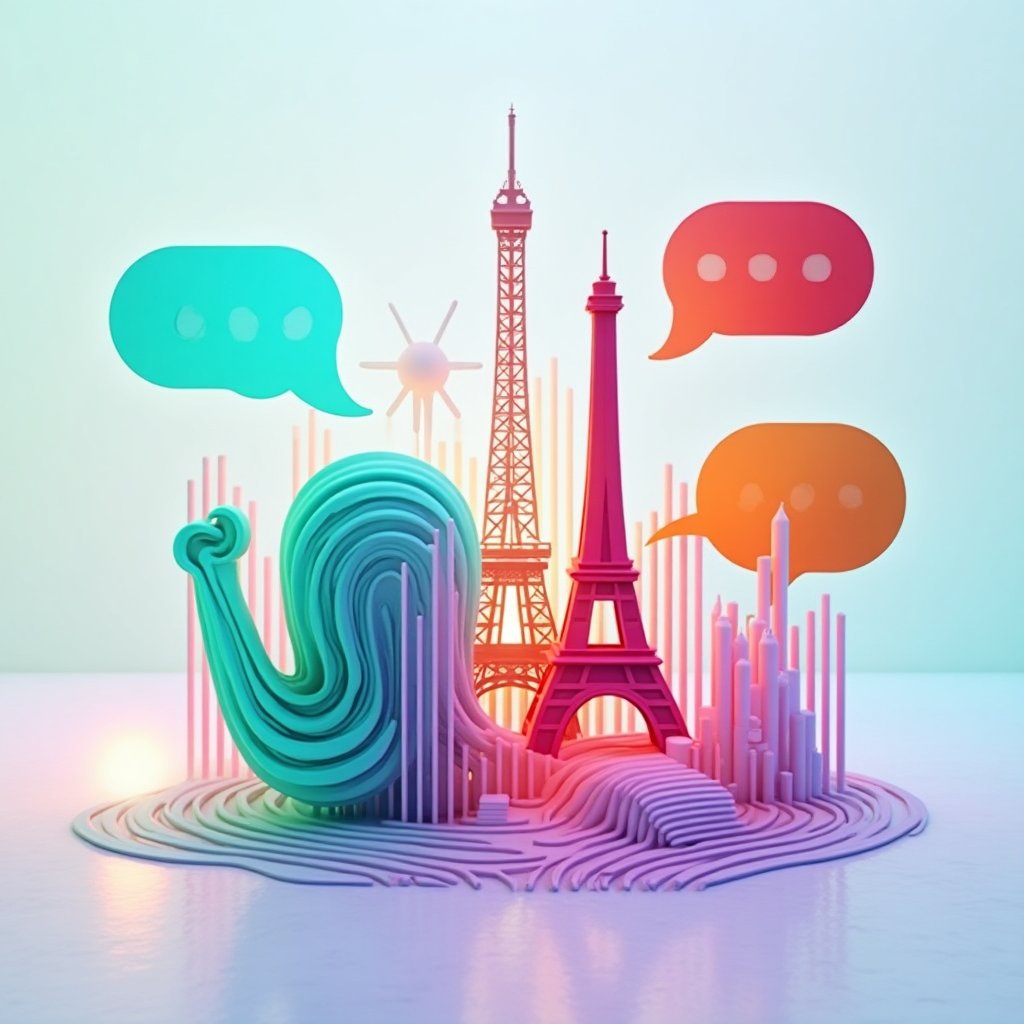
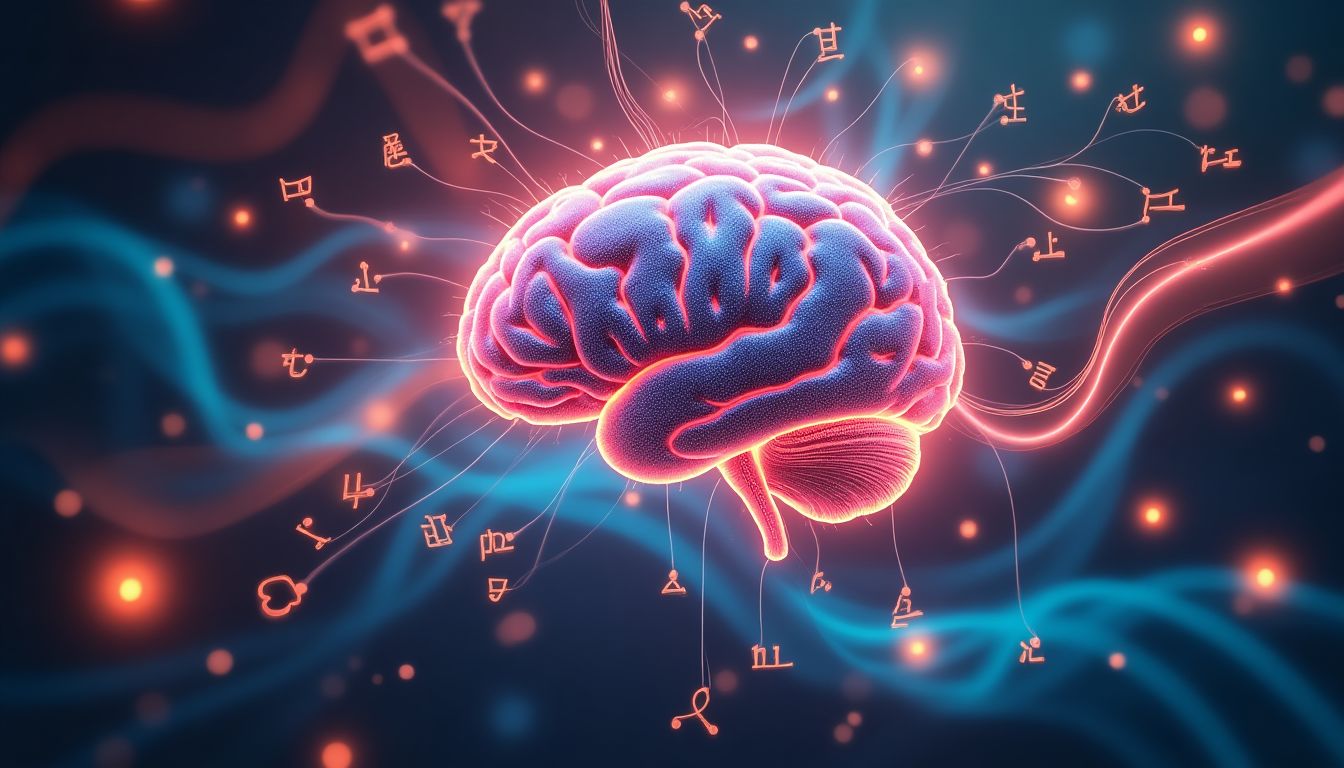
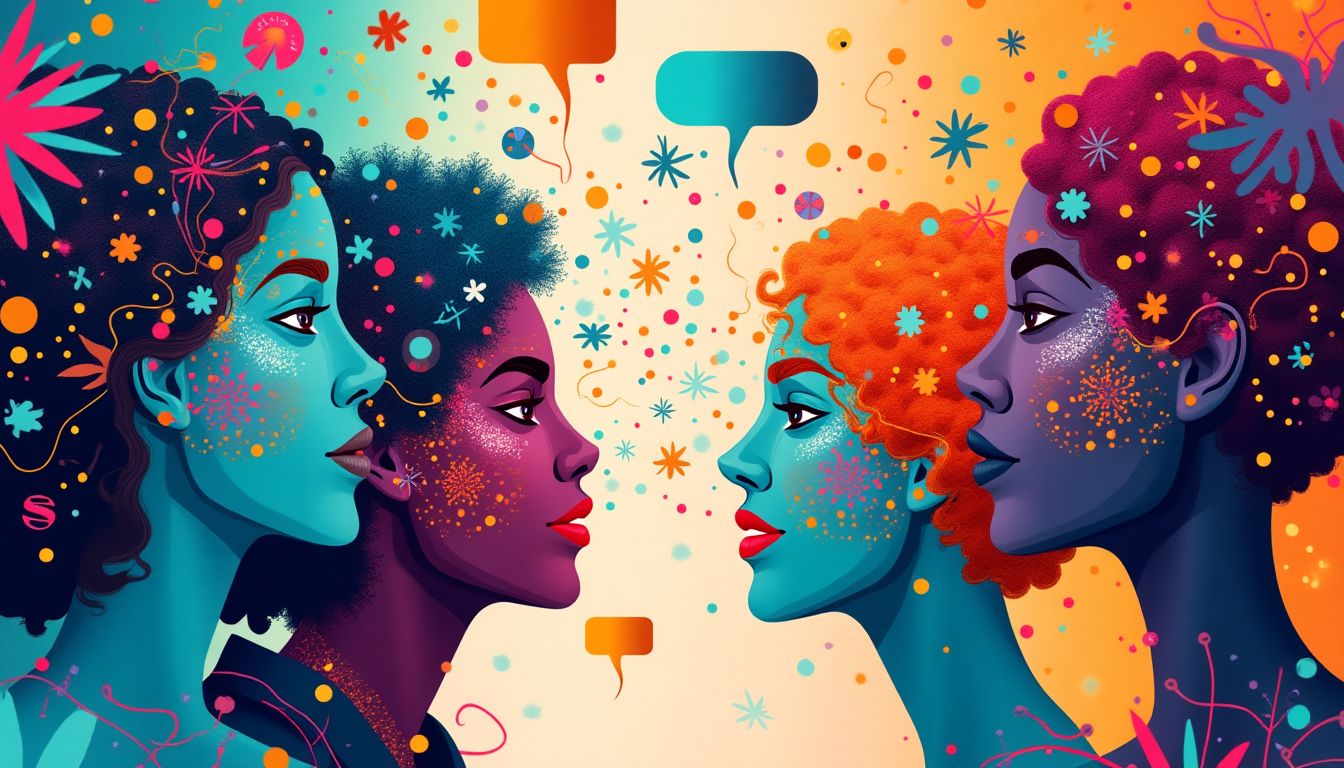
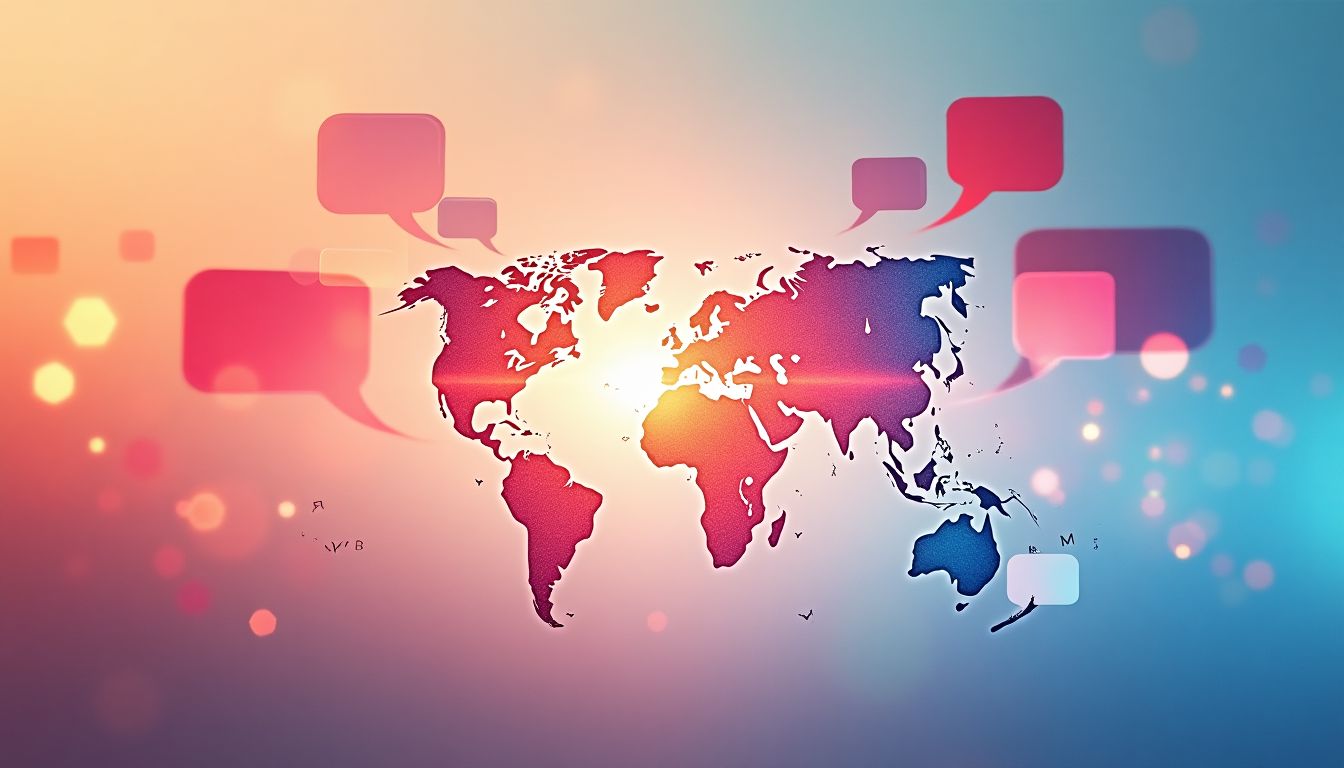
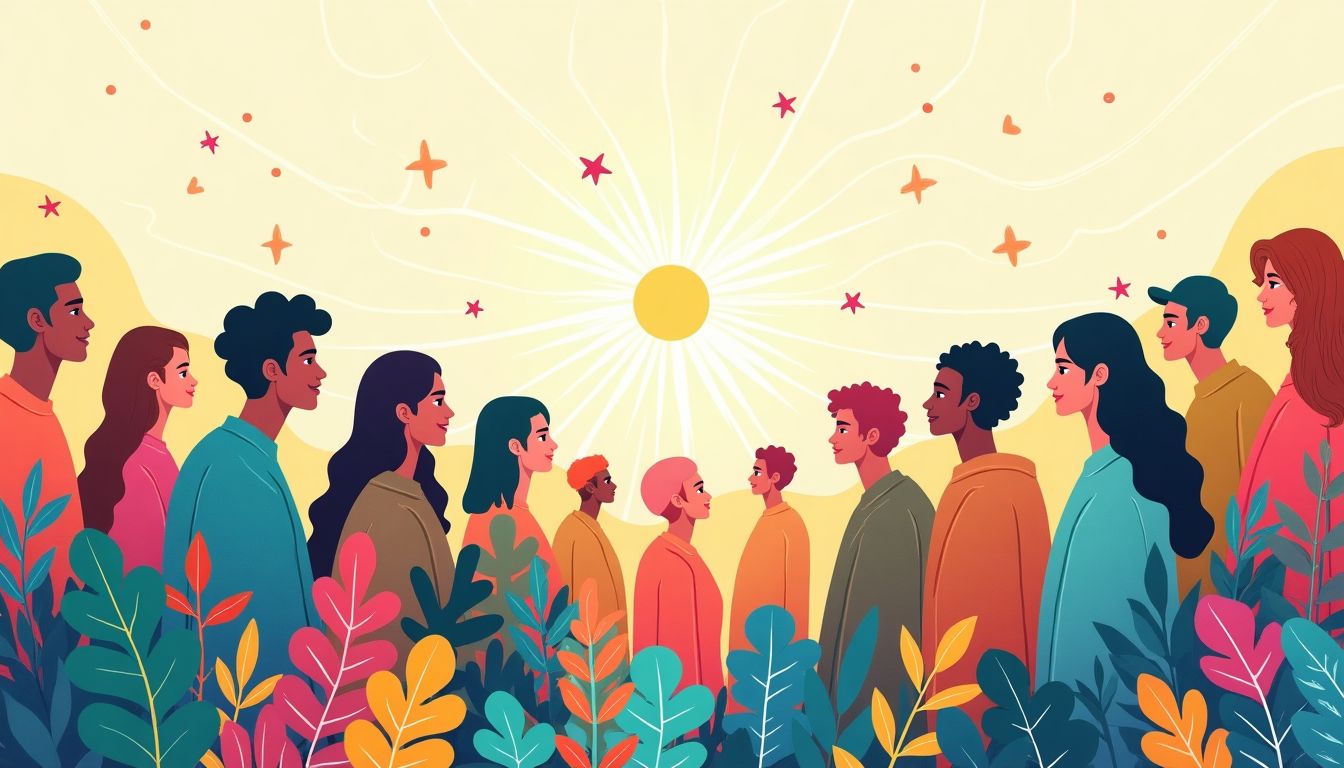
























Post Comment
You must be logged in to post a comment.